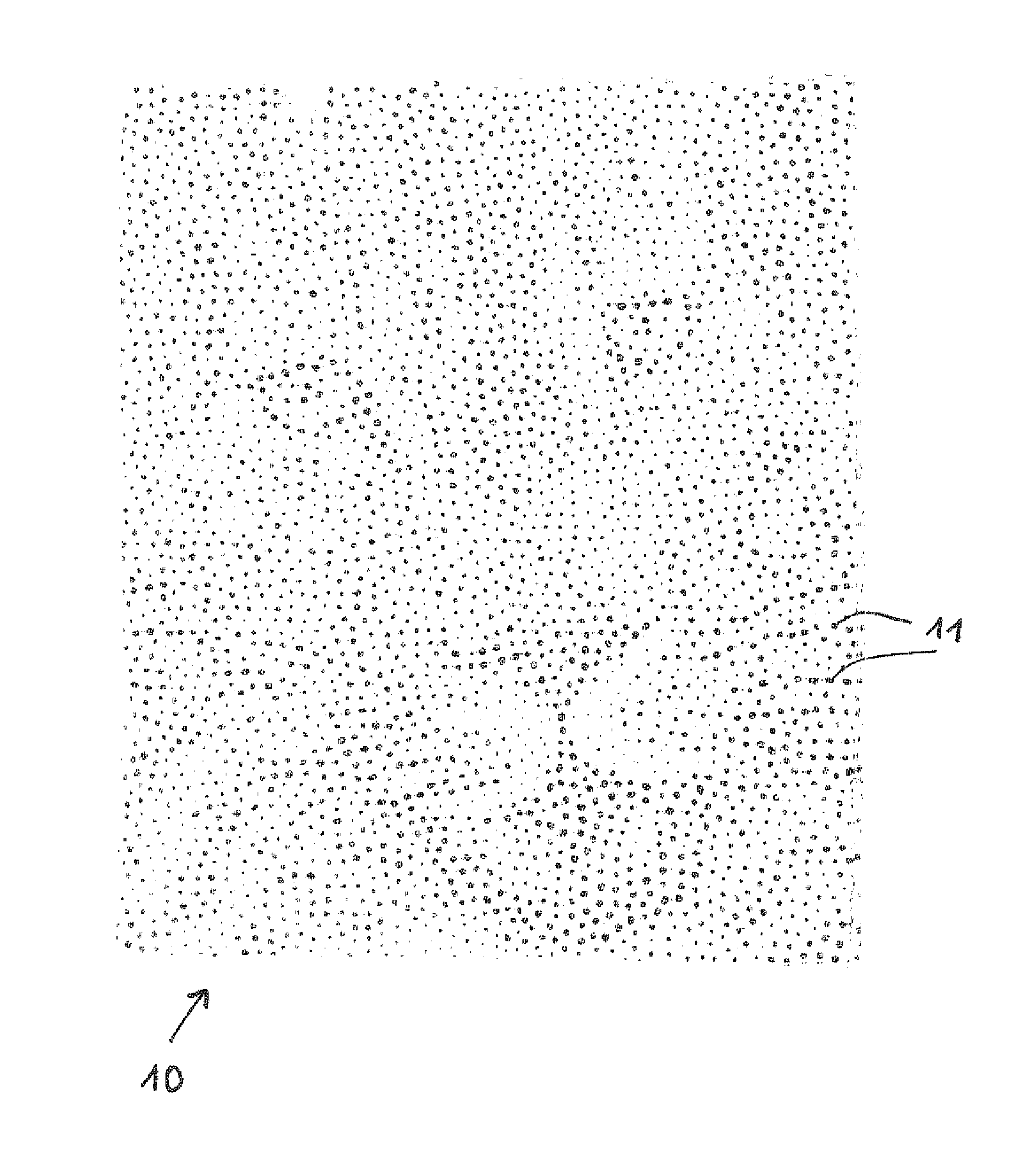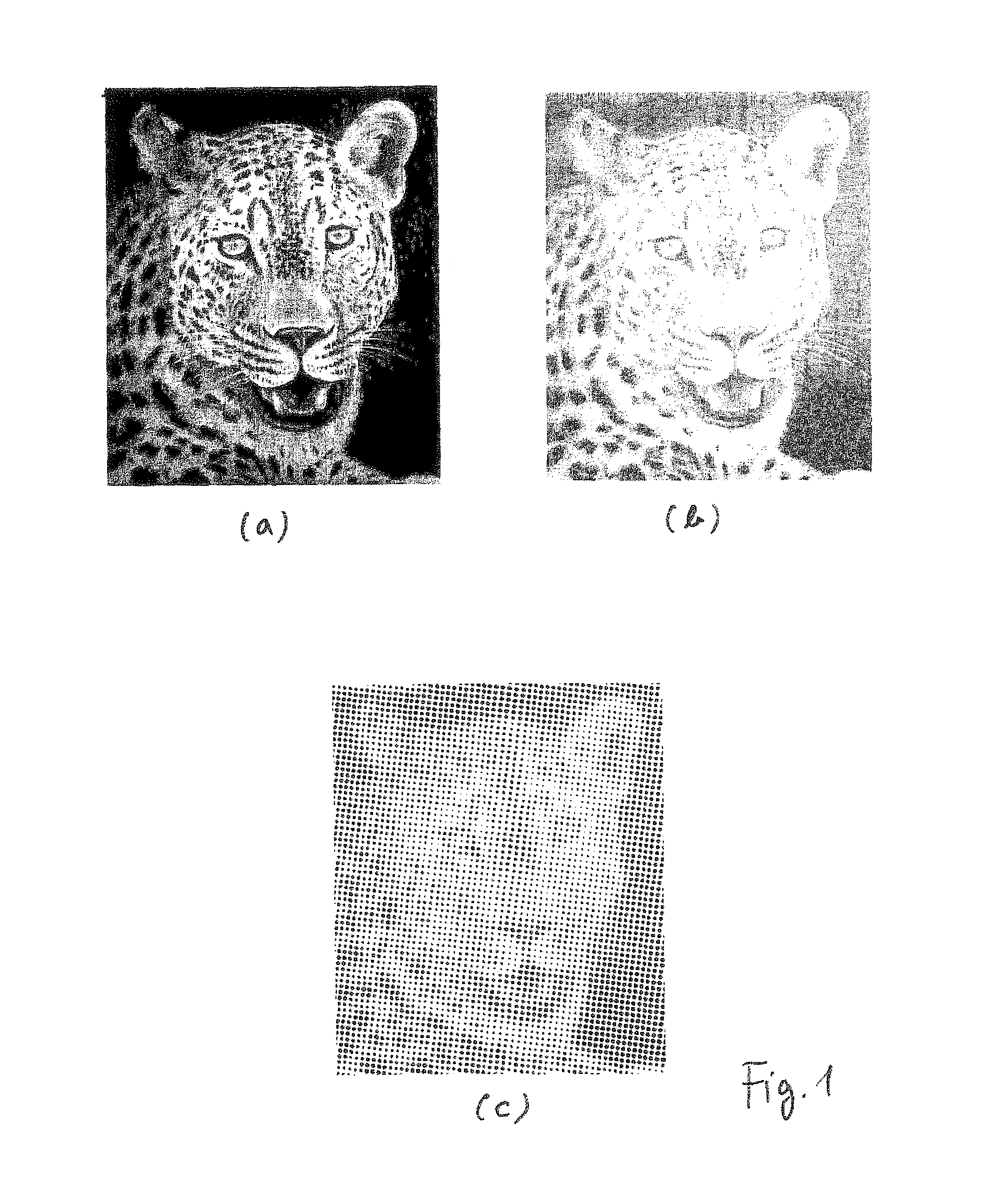Fibrous product with a rastered embossing and method for producing same
a technology of raster embossing and fibrous product, which is applied in the direction of lamination, printing, printing, etc., can solve the problems of product local stability reduction, product protrusion shape limitation, and inability to achieve raster embossing, etc., and achieve good visual
- Summary
- Abstract
- Description
- Claims
- Application Information
AI Technical Summary
Benefits of technology
Problems solved by technology
Method used
Image
Examples
Embodiment Construction
[0130]In the following, it will be explained how, starting from a suitable photo or design, the embossing surface of an embossing roll, and more specifically the position and size of the embossing protrusions on the embossing surface of an embossing roll can be selected. The repro work can start either from a photograph or design which is colored or which is in grey level. For the sake of simplicity, FIG. 1 starts with a grey level photograph of a leopard as shown in FIG. 1(a). The following steps of the repro work can be carried out with commercially available repro work programs like Photoshop, Nexus, AVA or others. After having selected the photograph or design it is scanned and used in electronic form on a computer. For example, the picture can be used as a tif-file. In order to arrive at the suitable motive element on the embossing roll, the design can be first trimmed and scaled on order to fulfill the needs of the desired optical effect and in order to fill a base surface are...
PUM
| Property | Measurement | Unit |
|---|---|---|
| sizes | aaaaa | aaaaa |
| diameter | aaaaa | aaaaa |
| depths | aaaaa | aaaaa |
Abstract
Description
Claims
Application Information
 Login to View More
Login to View More - R&D
- Intellectual Property
- Life Sciences
- Materials
- Tech Scout
- Unparalleled Data Quality
- Higher Quality Content
- 60% Fewer Hallucinations
Browse by: Latest US Patents, China's latest patents, Technical Efficacy Thesaurus, Application Domain, Technology Topic, Popular Technical Reports.
© 2025 PatSnap. All rights reserved.Legal|Privacy policy|Modern Slavery Act Transparency Statement|Sitemap|About US| Contact US: help@patsnap.com



